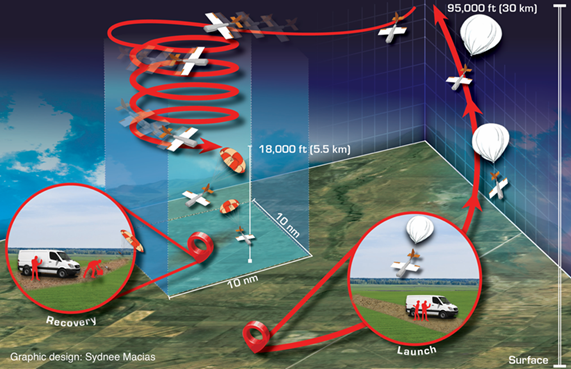Recent flight testing of the “High-altitude Operational Returning Uncrewed System” (HORUS) at NASA’s Armstrong Flight Research Center and Edwards Air Force Base, California between May 13-25, 2021 marks a huge success within NOAA. Scientists from NOAA’s Global Monitoring Laboratory (GML) and Cooperative Institute for Research in Environmental Sciences (CIRES) tested the ability to launch and recover the uncrewed HORUS glider and its AirCore science payload with operations up to 75,000 ft above mean sea level (MSL). The reusable platform and AirCore instrument ascended into the upper atmosphere, attached to a balloon before being released. It then collected air samples vertically from 72,000 ft MSL down to a predetermined landing spot during its remotely controlled, designed, spiraling descent. Reaching speeds of more than 200 knots at the beginning of the glide phase, HORUS was able to make up for the downwind drift caused by the 60+ knot wind speeds it had encountered around 40,000 feet MSL during its earlier balloon ascent. The successful testing brings the NOAA/OMAO Uncrewed Systems Operation Center (UxSOC) funded; and NOAA/OAR Uncrewed Systems Research Transition Office (UxSRTO) supported HORUS development to a Readiness Level of 8. This marks an exciting opportunity for many other NOAA atmospheric research stakeholders because HORUS enables the deployment and retrieval of high-value, balloon-borne packages from a designated launch and recovery location, even when strong mid-level wind conditions can be expected. With the HORUS, scientists can much more efficiently collect critical, higher-accuracy atmospheric measurements from all over the world to help improve weather and climate models, which have been limited until now because of the inability to effectively retrieve and reuse valuable sensor packages in areas where conditions and a lack of such technology have prohibited the realization of this novel concept.

